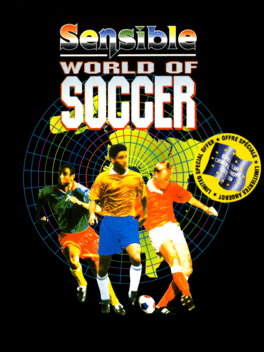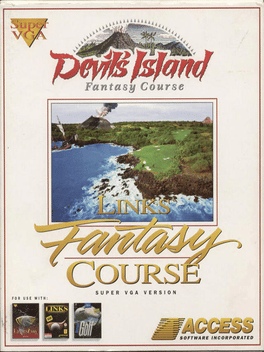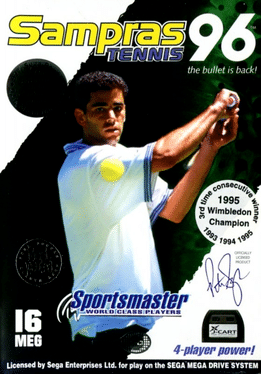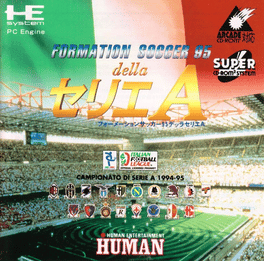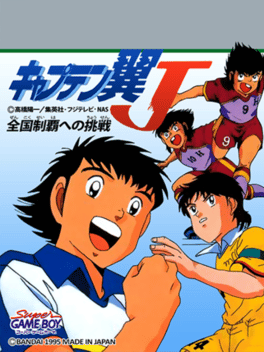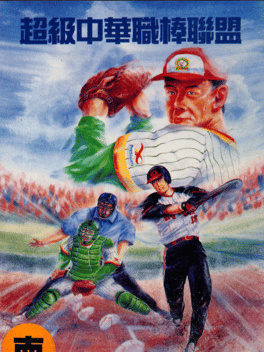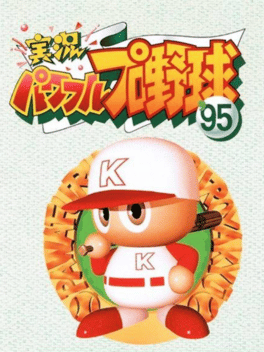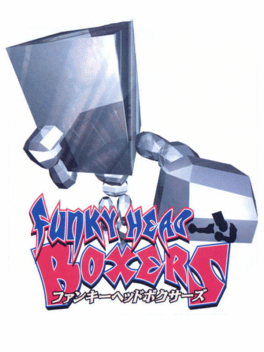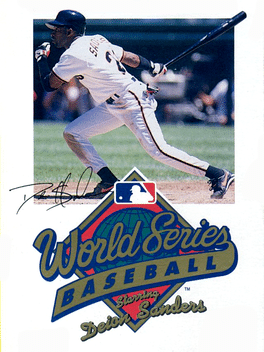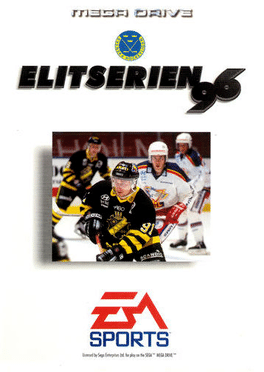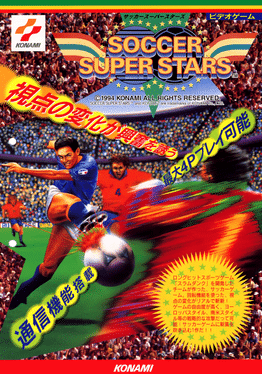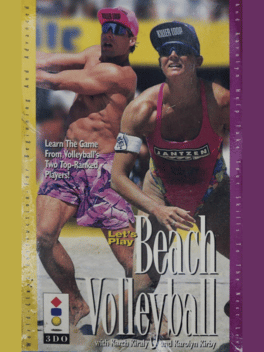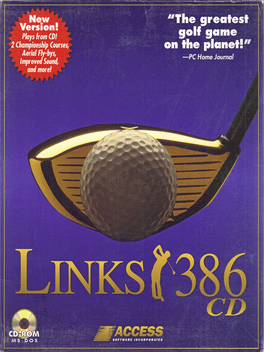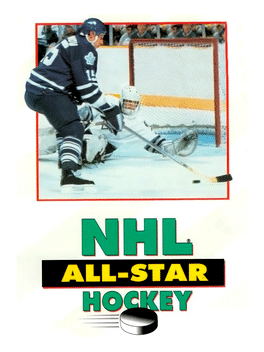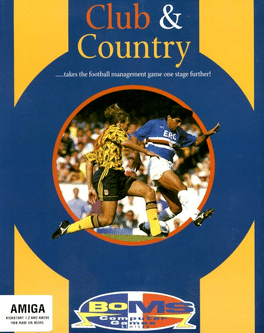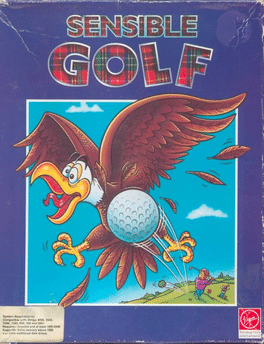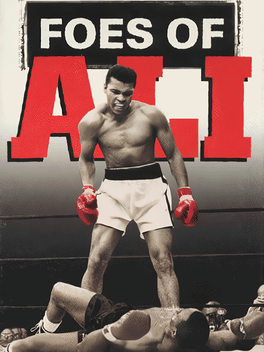New Sport Games - Page 174
-
Sensible World of Soccer: European Championship Edition
1995
A "sequel" of sorts to Sensible Software's 1996 Sensible World of Soccer. Based on the teams that played in Euro '96 tournament, SWOS: European Championship Edition sports new features that make the game even more addictive than SWOS, including the ability to pull off looping headers and curved passes, trial players, international management, and more charming cartoony graphics such as animated crowd and goal celebrations. The PC version of SWOS: ECE features digitized match commentary and funny animation sequences. -
Links: Fantasy Course - Devils Island
1995
An add on course compatible with Links, Links 386 Pro/Links Pro Macintosh, and Microsoft Golf. Devil's Island is the first Links add on course to not be based on an actual course. Tropical in theme, Devil's Island is more difficult than most other courses, featuring narrow fairways, extremely deep rough, and strategically located trees and objects. Both distance and accuracy are required in most shots. -
Formation Soccer 95: della Serie A
1995
A soccer game based licensed by the Italian Football League. Its structure is different from the Super Famicom version. -
Super Tennis Champs
1995
-
Funky Head Boxers
1995
Funky Head Boxers
1995
A boxing game for arcades and Sega Saturn, where the characters have massive, cube-shaped heads which distort during game play. -
World Series Baseball Starring Deion Sanders
1995
World Series Baseball Starring Deion Sanders is an entry in the World Series Baseball series, and was released exclusively on the Sega 32X in 1995. It was not released outside of North America. -
Elitserien 96
1995
Elitserien 96
1995
A hockey game released in Sweden in late 1995. The gameplay is based on the NHL games but it's starring the teams and players from the swedish hockey league Elitserien. -
Soccer Superstars
1995
Soccer Superstars
1995
Soccer Superstars is a 2D side-scrolling football game in which the player can chose from 32 international teams to take part in either friendly games or cup tournaments. These can be played against the computer or both computer and a friend, however there is also a demo mode in which you will be able to see an entire tournament -or a friendly match- as a mere spectator. You are also free to modify team line-ups (all composed of real national player names), select basic formation systems, and alter the game length. The game interface is multi-language. -
Kingpin: Arcade Sports Bowling
1995
Kingpin: Arcade Sports Bowling is a bowling game with support for up to 6 players, who can be human or CPU-controlled. Player statistics can be built up as you play. On the bottom right of the bowling alley screen there is a power gauge that can be altered pressing the Up and Down keyboard arrow keys / joypad buttons. Pressing the Left and Right keys changes the position of your avatar, and hitting Enter / fire makes a small moving arrow appear in the bowling lane. It shows the direction your character will throw the ball when you hit Enter / fire again. -
Links 386 CD
1995
Links 386 CD
1995
star 7.5This is an updated version of Links 386 Pro which retains its Harbour Town Golf Links and adds a previously released add-on: either Championship Course - Banff Springs (US release) or Championship Course - The Belfry (European release). Multimedia enhancements include aerial flyby's with music and commentary, additional comments by comedian Bobcat Goldthwait (your personal caddie). The game now tracks better the add-on courses and they can be played off the CD. -
NHL All-Star Hockey
1995
NHL All-Star Hockey
1995
NHL All-Star Hockey is a Sports game, developed by Gray Matter and published by Sega, which was released in 1995. -
Club & Country
1995
-
Battle for the Ashes
1995
Battle for the Ashes
1995
In this cricket game published by Audiogenic Software Ltd. the player can play as either Australia or England in a 5-day test. -
Sensible Golf
1995
Sensible Golf
1995
Sensible Golf is a 2D golf simulation. Having been quite successful with their cute action soccer game Sensible Soccer, Sensible Software decided that the concept of "No fuss, just fun" could be applied to other sports, too. They chose golf. Sensible Golf is not an accurate simulation of golf, but an action adaptation of the sport streamlined for quick and easy gameplay. Consequently, complications such as wind and terrain heights are not featured, although the green has little arrows indicating the slopes. Apart from that, the player's only concerns are the water and sand hazards, and the distance to the hole. As a result, Sensible Golf is instead a practice in target shooting, rather than a golf game. Striking involves only two action: Aiming the pointer in the desired direction, and pressing the action button three times. The game uses the well-known three-click-control, with which you set power and swerve of the strike. The computer automatically suggests a proper club, but the player may change it man -
Foes of Ali
1995
Foes of Ali
1995
Foes of Ali is a 3-D boxing game with ten different boxers to choose from: George Chuvalo, Henry Cooper, Jimmy Ellis, Bob Foster, Joe Frazier, Sonny Liston, Ken Norton, Leon Spinks, Chuck Wepner and of course the games namesake Muhammad Ali. There are three modes to choose from: Exhibition where the player can choose any boxer to fight another, or the player can choose any of Ali's historic fights to play, Tournament where a player fights a series of boxers in an 8 man tournament tree to become champion and Career Mode, where the player can only play as Muhammed Ali and fight the other boxers in order as he did in real life. Players fight opponents with the basic punch moves, jabs, uppercuts and hooks along with defensive moves like blocking and grabbing. Fatigue is not simulated, but players can slow down their opponents after a series of large successful hits along with bruises, blooded and black eyes. There are 21 different camera views to choose from, including first-person that will react to their fighters
